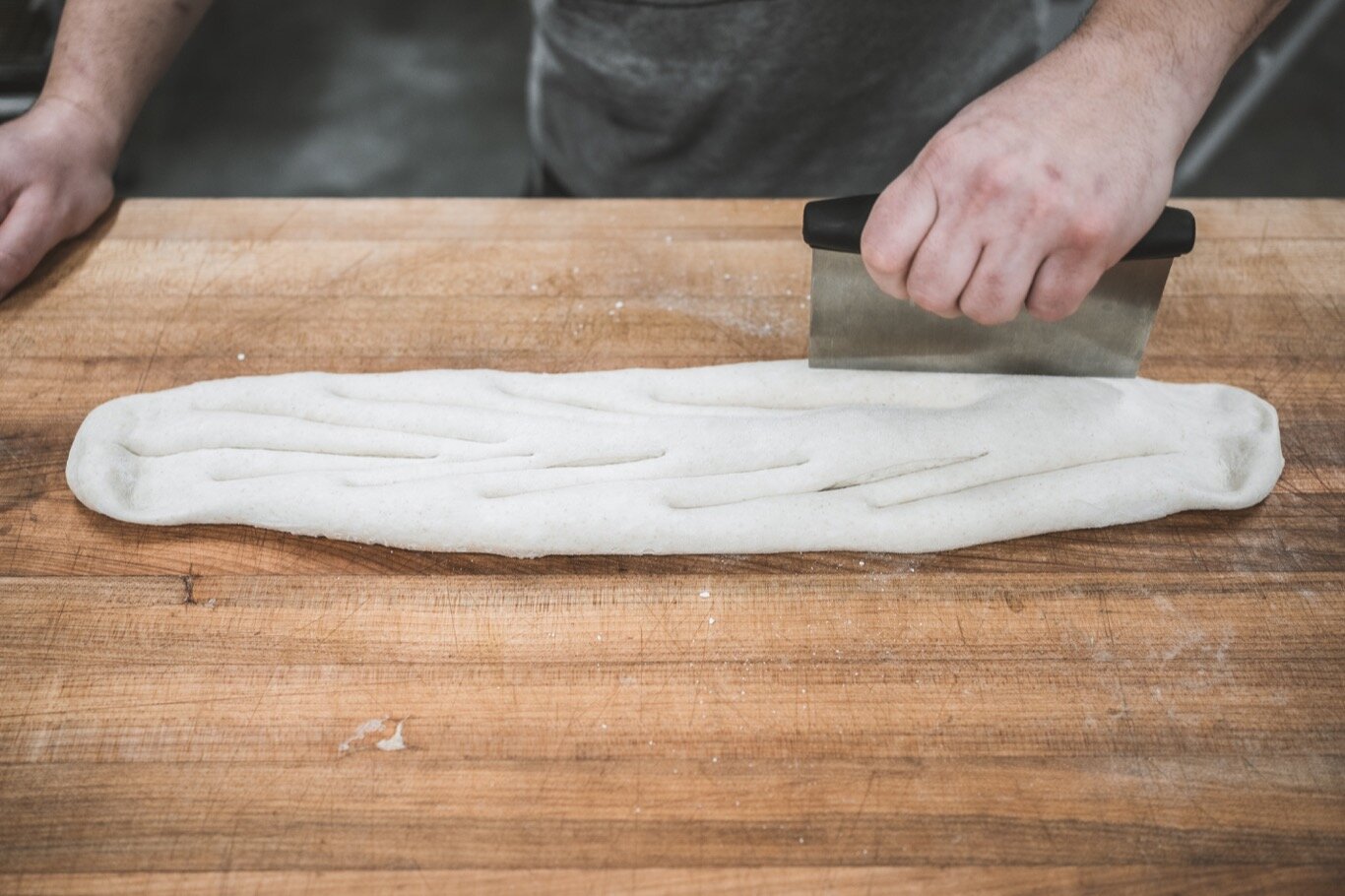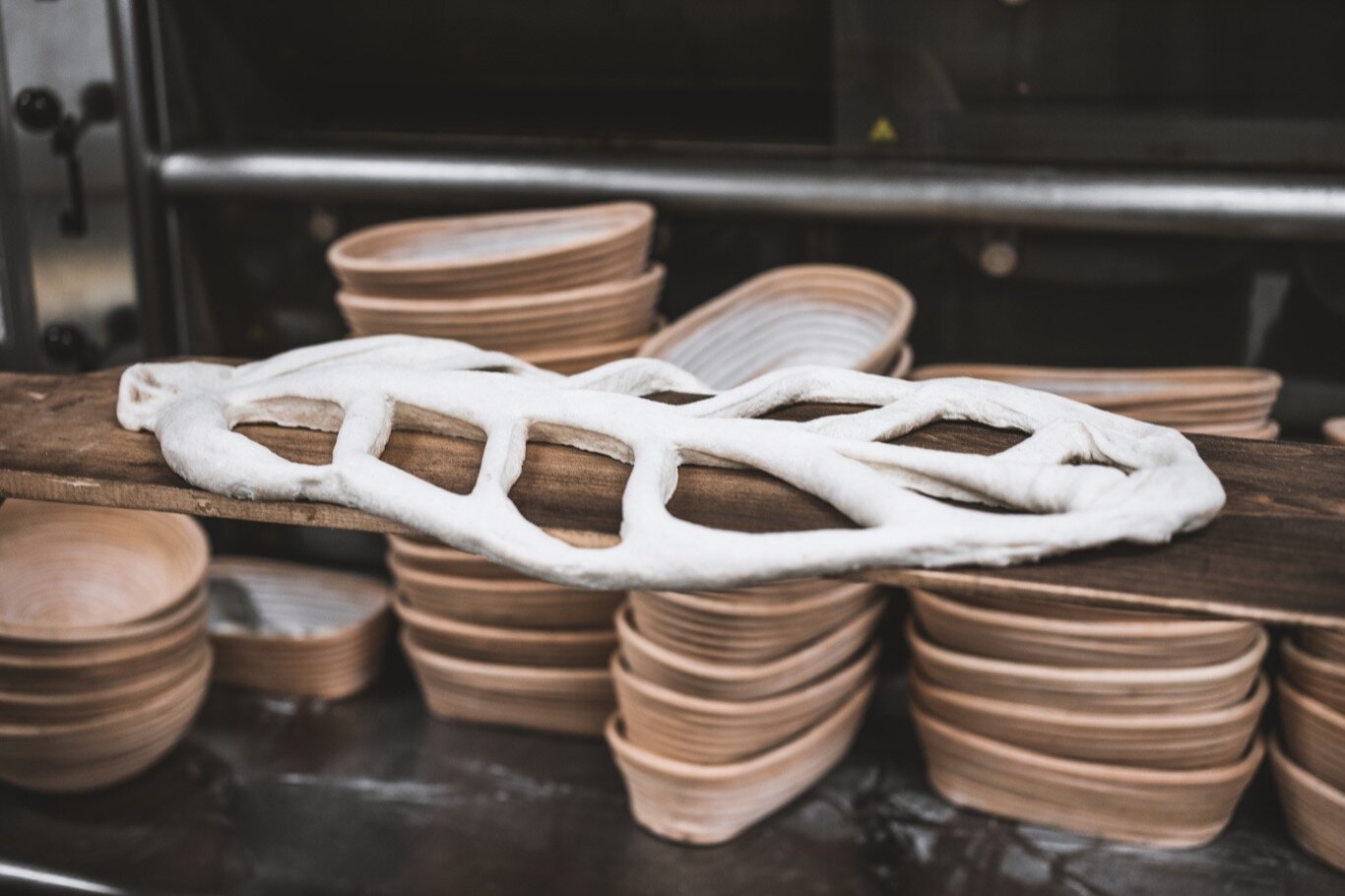Fougasse
Yields: 1 fougasse
Fougasse is a type of bread originating in France and typically cut into a wheat sheath pattern. Using a basic sourdough recipe, we begin after the final proof in a banneton right before you would usually place the bread in the oven. The bakes bread is then brushed with herb and garlic infused olive oil and sprinkled with sea salt.
For the levain (sourdough culture used in final dough):
150 g Flour
150 g Water (room temperature)
12g (approx. 1 tbsp) Mature starter (doubled in volume but not yet receding)
For the final dough:
650 g Anita’s All Purpose White Flour
50 g Anita’s Whole Grain Rye Flour
17 g Fine sea salt
460 g Water
Herb & Oil
Several stems of fresh herbs (rosemary, thyme, oregano)
5-10 cloves of garlic
1 cup extra virgin olive oil
Mix the levain ingredients and let stand at warm room temperature (23-24˚C) for 8-12 hours. Look for a 25-50% increase in volume. When ready, it should have a fruity tangy smell and taste. A younger levain will yield a more mild flavour in the final loaf and a longer fermented levain will result in a more sour loaf.
Autolyze: One hour before the final mix, combine the flour and water (no salt) of the final dough until fully incorporated with no dry bits left. Cover the dough and allow to rest.
Final mix: Add the levain and salt and hand mix to incorporate.
Development: Use the ‘slap and fold’ technique to develop the gluten in the dough. 5-6 minutes.
Bulk Fermentation: Ferment for 3-4 hours at warm room temperature (23-24˚C) with two folds at 45 and 90 minutes, or three folds at 30, 60 and 90 minutes if the dough seems very loose.
Divide the dough into two 750 g pieces and preshape. Bench rest for 20 minutes. Shape the loaf into either a Boule or Batard depending on the shape of your proofing basket.
Final proof: Proof approximately 2 hours (use the finger dent test). You can also proof for 1 hour and then retard in the fridge for 8-36 hours.
Preheat the oven to 500F with a pizza stone placed on the center rack.
Tip the loaf out of the banneton and gently stretch the dough to elongate it by grasping the ends and gently flopping the dough up and down while you pull out. If the dough has a dry skin mist with water and wait a few minutes before stretching to avoid tearing the dough.
Cutting the wheat shape:
Using a metal or plastic dough scraper make one cut close to one edge right in the centre. Then make 4-6 cuts along each side slightly angling towards the edge of the dough.
Pick up the dough by the top and let the dough stretch out as you transfer it to a piece of parchment. Stretch out the dough on the parchment so the cuts open up. Mist the top of the dough with water before transferring the to pizza stone in the oven.
Bake for 20-25 minutes until the dough is browned with some very dark spots.
As soon as the dough comes out of the oven brush generously with herbed olive oil and sprinkle with flake salt.
Herb & Garlic Oil
In a small saucepan place several stems of fresh herbs (rosemary, thyme, oregano) garlic, and extra virgin olive oil. Heat on medium heat until bubbling and then reduce the heat to medium low and simmer gently for 15-20 minutes until the garlic is very soft and beginning to brown.
IMPORTANT! Leftover oil should be refrigerated immediately due to the risk of botulism when garlic is left in oil at room temperature.







